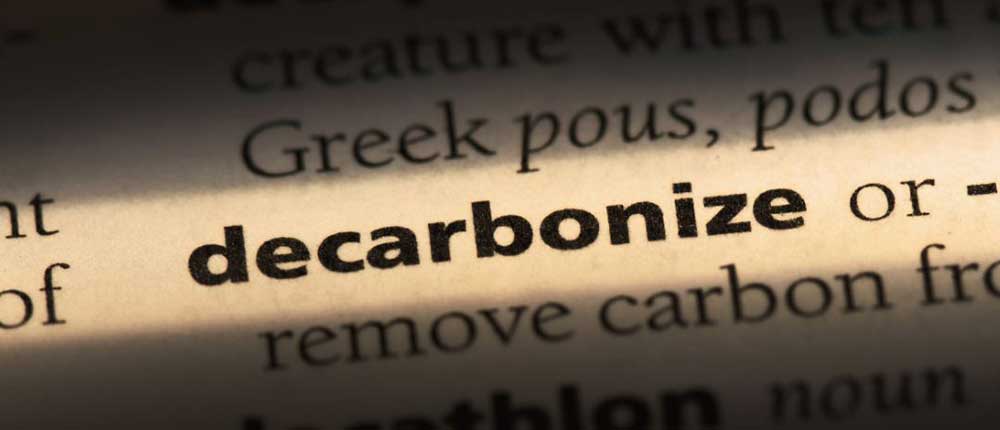Since the COVID-19 was declared as a pandemic, it has spread across 200 countries and has had massive ramifications on political, economic, financial, and social structures across the world. Governments, businesses, and organisations have had to take drastic measures to curb the spread of the disease.

Some of the primary measures like physical distancing, wearing face masks, travel restrictions, self-isolation, quarantines and curbs on large social gatherings have had an impact on the larger global socio-economic system. This pandemic not only threatens the lives of the present generation but also future generations. This disease has infected 11.4 million persons and has led to the death of 53,50,000 worldwide. Countries across the globe have started easing some of the restrictions to deal with the economic challenges, we must be cognizant of the uncertainty (in terms of a cure, vaccine, a second wave of infections) associated with it. While the aspect of the uncertainty has always been associated with the global climate discourse, the pandemic highlighted the importance of 'decision making under uncertainty'. Given the massive ramifications of COVID-19 continuing to overwhelm the world, 2020 appears to be turning out into a year of huge uncertainties at the global and national levels. This uncertainty is exacerbated by the compounding risk of dealing with a pandemic outbreak and extreme weather (as seen in the case of Amphan cyclone).
The global response to the threat of climate change has never been more complicated. The Conference of Parties (COP26) and the meetings of the Subsidiary Bodies (SB52) have both been postponed to 2021. The year 2020 was an important one in the global discourse on climate action as countries were to share revised Nationally Determined Contributions (NDCs) that were to reflect enhanced and ambitious climate action. This is also crucial if we are to ensure that the first Global Stocktake scheduled for 2023 is a success.
Many argue that the Paris Agreement (PA) serves as the framework for countries to take climate action and that the rule book to implement the PA has already taken broad shape and therefore the onus of action is on respective countries now. However, it is important to note that countries are dealing with the biggest health emergency of our times, where measures to deal with the same have resulted in the steepest contraction of global economy. So much so that many countries are considering rethinking their commitment to environmental policies while trying to recover the losses that businesses have incurred while dealing with the pandemic. COP26 and the SB52 were, therefore, crucial to sustain momentum for undertaking enhanced climate action, for NDCs which countries have submitted currently are not enough to limit global temperature rise to 1.5°C - 2°C. In the absence of these meetings this year, it becomes important to sustain dialogue and momentum on climate action.

One possible way to ensure this would be to have several virtual international meetings to ensure a sustained dialogue. For example, the UNFCCC under the guidance of the SB Chairs organised and conducted a series online events from 1-10 June 2020. These events provided an opportunity for Parties and stakeholders to continue dialogue on climate action. A 'Race to Zero' campaign[1] was also successfully launched during the course of these events. This global campaign under the stewardship of UN High Level Champions from the UK and Chile currently represents a coalition of 449 cities, 21 regions, 995 businesses, 38 of the biggest investors, and 505 universities. They collectively represent 25% of global CO2 emissions. Such initiatives and ensure that achieving ambitious climate goals does not remain a distant dream.
The ongoing pandemic is negatively affecting global economic growth and it is estimated that economic growth could reduce by 3-6%. This economic fallout raises the risk of a global recession with high levels of unemployment that has not been experienced since the Great Depression in the 1930s. A partial recovery is only expected in 2021 under the assumption that the world will not witness a second wave of infections. While businesses and economic have remained closed for an extended period of time the pandemic has had an immediate impact on employment. Alarming rates of unemployment have been recorded all over the world; the Centre of Monitoring Indian Economy recorded an 8.59% unemployment rate with urban areas reporting a higher rate than rural areas.
With the threat of compounding risks of an ongoing pandemic and climate change, countries must take immediate steps to safeguard lives and revive the economy. To be successful, this will require a radical approach to policy-making with an immediate focus on (i) enabling robust healthcare capacities and infrastructure, (ii) improving access to public health services and essential supplies; and (ii) maintaining liquidity across businesses and households. And medium to long-term focus on more structural reforms that do not allow lock-in of carbon-intensive infrastructure amongst other things. Only such a radical approach would ensure that climate action remains the focus and economies revive better. Therefore, the economic recovery package would serve well if it invests in a low-carbon and resilient economy for the future. For choices made now will impact our future generations.

There are some lessons that we can learn from this crisis as we revive our economies and apply towards the greening of the recently announced economic stimulus package.
- Active involvement of governments in times of crisis is crucial and climate change is yet another crisis that we face today. Therefore, governments planning to spend trillions in recovery packages need to invest in solutions, technologies and policies that are low carbon and climate-resilient. For example, renewable energy may have an important role in unburdening health systems and restarting local economies. A recent study found that switching from the present electricity scenario to a more ambitious renewable energy scenario in India will reduce health costs by USD 1,98 billion by 2030 and the number of premature deaths in 2030 resulting from air pollution from coal-fired power plants can be reduced by 29%[2]. Therefore investing in renewable energy even more vigorously now makes much more sense.
- Quickly mobilize financial resources and take bold climate action. Huge financial resources are estimated to be required to undertake climate action and investments made now will reap large benefits in future. UN Secretary-General António Guterres' in a message for the international day for disaster risk reduction suggested that for 1 USD invested in climate-resilient infrastructure 6 USD are saved[3]. For instance, investments in low-cost climate-resilient housing using sustainable construction material are required in any developing countries. On the other side, the automobile sector witnessed a huge slump like never before. While the sales of diesel cars have been one of the lowest in recent times, it is to be seen if thrust on electric vehicles and related infrastructure can be provided to see larger climate benefits as against going the old ways.
- Make the supply chains climate-resilient. The current crisis necessitates that we understand the supply chain in greater depth and re-examine the viability of supply-chains where the emphasis is on securing the least cost products. It implies that there will be a need for reducing supply chains and hence, increasing domestic jobs. For instance, economic preference may be given to products from MSMEs, marking a shift in such a preference from large global companies. It would though violate the WTO provisions but would be in the interest of many countries.
- Enhance focus on jobs, skills and training and safeguarding livelihoods. In the long term, it will be beneficial for the countries to enhance skills and create demand for these skill sets. The renewable energy sector for example has high job creation potential and skilling will be the primary future challenge of the sector. At the same time, in a country like India, there is a need to create local, low skill jobs and create opportunities for low carbon climate-resilient development for example use of MGNREGA for preparing a workforce that can help achieving the goals of carbon sequestration and avoided emissions as will be important. MGNREGA also has been an important part of the economic package. This will be important to fulfil one of the NDC goals while ensuring just transition of millions of migrants that have left urban centres only recently.
There is a tremendous opportunity for countries at this stage to steer economic recovery and stimulus packages to be more environmentally conscious. Investment in nature-based solutions and sustainable agriculture; loan and grants for green investments; reinforcing environmental regulation are some of the ways this can be achieved. While 'greening' a recovery will focus on immediate economic relief, a long-term strategy is also necessary to build resilience.
(This article was originally published in the August 2020 issue of Energy Review newsletter)
Footnotes
[1] https://unfccc.int/climate-action/race-to-zero-campaign
[2] https://www.cobenefits.info/wp-content/uploads/2019/10/COBENEFITS-Study-India-Health.pdf
[3] https://www.un.org/press/en/2019/sgsm19807.doc.htm
